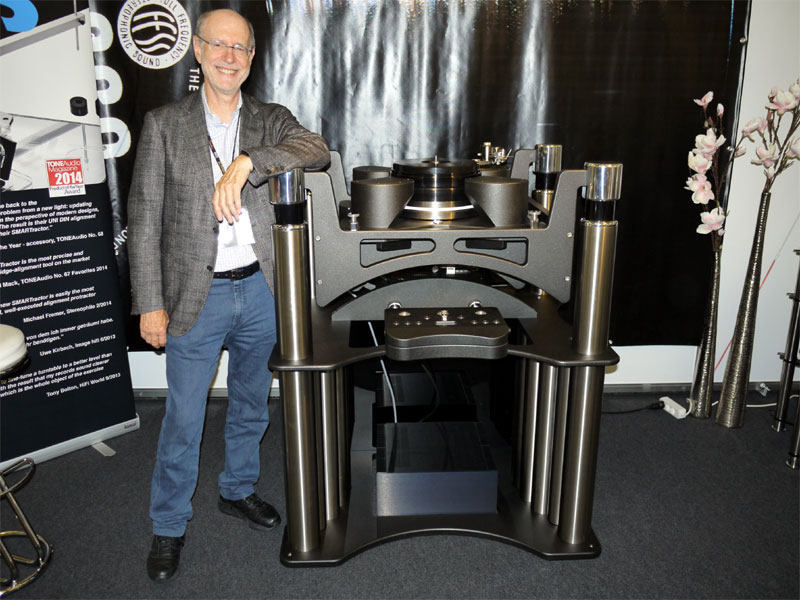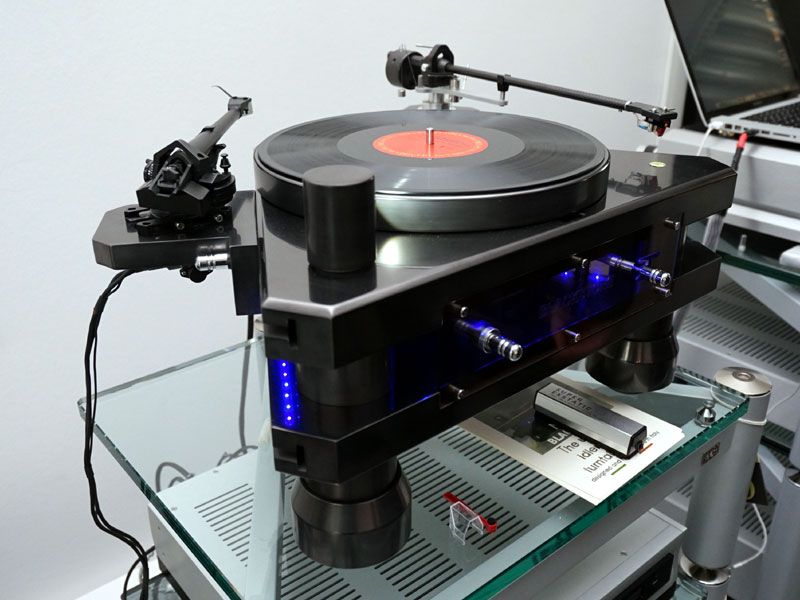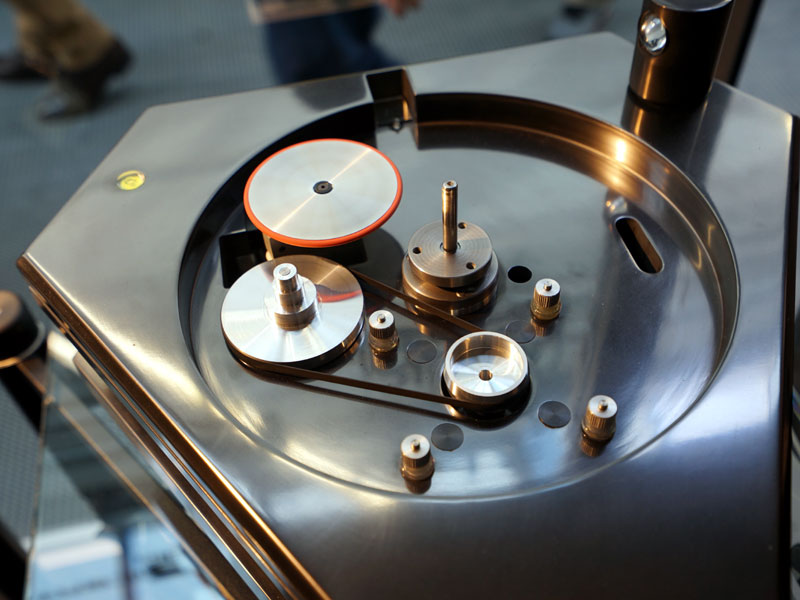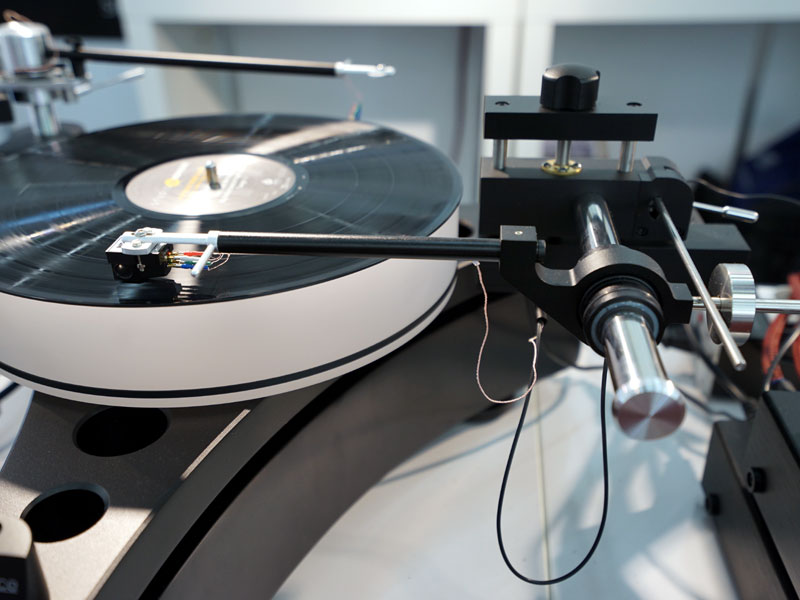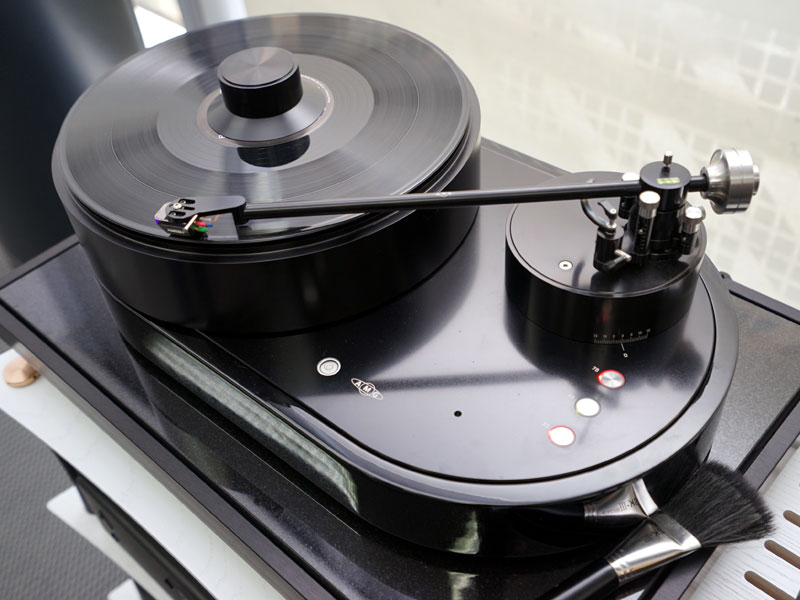High End 2016 • TABlog
ime was that the one thing you could be sure of seeing at a German show, be it in Frankfurt or Munich, was the biggest, weirdest range of analog products you were ever likely to come across: from heavyweight turntables of unimaginable mass and materials to tonearms as long as, well, your arm. Things that spun, things that slid, things that levitated and things that gyrated -- it was all fair game. The rise of first CD and then file replay took the wind out of the analog sails, and for the last few years things had calmed down somewhat. But this year analog insanity was back with a bang. Whether it was record cleaners or turntables; linear-tracking, zero-tracking or just plain pivoted tonearms; the sheer variety and inventiveness of the offerings was breathtaking. My own personal favorite bit of analog lunacy? The 12", zero-offset, zero-track tonearm with its two articulated chopsticks and pivoting headshell. But not all the excess was quite as crazy as that. Perhaps the one product that really captured the mood came from Acoustical Systems, a company that’s been building a serious reputation based on its fast-becoming-indispensable SMARTractor alignment device, the elegant Axiom tonearm and a range of fluid-damped moving-coil cartridges.
But just to prove how serious they are, they also brought the Apolyt turntable to the show. Air-suspended with an air-bearing platter, the ‘table will take four tonearms, offers a unique variation on belt-drive and weighs in at a mere 388 kilos or 850 pounds. Don’t even think of asking the price. But there were also some genuinely exciting new products on show. Here’s my pick of the them: one idler-drive and one belt-drive ‘table, one pivoted 'arm and one parallel tracker. Audio Silente is a new name to me, hailing from Italy and offering a whole host of analog goodies, including headshells built from a variety of materials ranging from various woods and carbon fiber through to solid graphite -- all connected with their own in-house socketry. There were three tonearms, one at 10” and two at 13”, including the Black Silent Graphite (€2900) with a graphite armtube and an effective mass of 50 grams! Only owners of early Koetsu, EMT and Ortofon cartridges need apply.
But what really caught my eye was the Blackstone turntable (€31,000 to €36,000), not for its styling or aesthetic elegance but for the elegance of its engineering. It is constructed from a pair of triangular graphite plates, each 4cm (1.5”) thick, and the rear edges are keyed with a deep groove in which runs the graphite armboard(s), allowing easy and extremely precise setting of pivot-to-spindle distance, combined with a huge surface area on the interface between arm mount and chassis, ensuring super-rigid coupling.
The drive system is a beautifully executed and tunable idler powered by a Papst AC synchronous motor and driving an 8-kilo brass or bronze platter. Three speeds are available, and there's a removable top-mounted strobe to ensure perfect pitch.
More familiar is Continuum, although their latest Obsidian turntable ($35,000, plus another $10,000 for the matching Viper tonearm) is altogether more compact and more affordable than previous models. Despite its compact dimensions, only just bigger than the platter itself, the ‘table can accommodate two tonearms and features the key design elements and materials used in the company’s bigger and vastly more expensive products. The nested platter weighs 20 kilos and rotates on a 25mm/1” tungsten shaft running on a tungsten-carbide ball. Vertical load is reduced (but not eliminated) by the use of opposing magnets -- à la Platine Verdier. There’s no vacuum hold down, although an effective clamp is provided. A servo-controlled DC motor drives the platter via a belt, while the minimalist three-leg chassis incorporates magnetically damped stiff-spring isolation elements in each of its feet. Both the motor and the freestanding armboard(s) are mounted on twin rod outriggers, the arm mount located to its base by three Tungsten pins (although it's anchored in place magnetically). There’s more tungsten in the 'arm’s 25mm tungsten post with its threaded stainless-steel sleeve, ensuring excellent transmission and self-damping of mechanical energy travelling down the 'arm. The Viper is a clear descendent of the Copperhead and Cobra 'arms, a sapphire Vee bearing running on a stainless-steel vertical post, the boat-like carbon-fiber shell of the 'arm offering light weight and extreme rigidity. Arm-tops can be easily switched out if you want to run more than one cartridge. Although the Obsidian is smaller and more approachable than either the Criterion or the Caliburn, it really does represent a stripped-down version of the same thinking. Such is the way of things that I find myself wondering just how little it gives away in performance terms.
When it comes to tonearms, things are a whole lot more simple, not least because so many of the contenders were so clearly either howling-at-the-moon crazy or more than just a little odd. But there were two notable exceptions. First up was an intriguing offering from Opera Audio Consonance, a neat and incredibly simple air-bearing parallel tracker devoid of name, price or any other relevant information. The distributor was hoping to sell it for less than €3000 (considerably less, depending on who you were and the day you spoke to him), including a compact compressor that, whilst it vibrated significantly, was extremely quiet. More importantly, the design had the fundamentals right, with a captive, inverted bearing running on a large-diameter shaft, combining a low lateral moving mass with sufficient surface area for mechanical stability. General layout resembles the Rockport 'arms (if you are going to copy, then copy the best), but there’s no damping trough. The all-important cueing action is smooth and direct, while the massive VTA frame looks like a miniature hand press, with its wide stance, twin vertical posts and central threaded adjuster. Opera has also gotten the mounting right, replaceable base elements allowing you to adapt for full-depth or rear-corner armboards. This is one I’ll be keeping an eye on, and if the price is anything like that quoted, then it could be the bargain-basement air-bearing 'arm I’ve long hankered for, capitalizing on the conceptual simplicity, mechanical advantages and theoretical benefits of such designs without costing the earth.
Having been recently enjoying the performance of AMG’s 9W2 tonearm in conjunction with the DS Audio DS-W1 cartridge, I’ve developed a healthy respect for this svelte and elegant 'arm’s performance. I wish I could say the same for its setup, which makes incremental adjustment all but impossible, especially when it comes to azimuth and bias. Once you get them right the 'arm sings, but it is a hit-and-miss process to say the least. Enter the new AMG 12JT tonearm ($8500), which might have
been designed specifically as a response to my criticism of its shorter brother. The
deluxe version of AMG’s familiar format adds larger-diameter horizontal bearings for
increased stability and energy transfer, but more importantly it now uses calibrated and
lockable thumbwheels for all alignment adjustments. It also looks seriously cool. |

